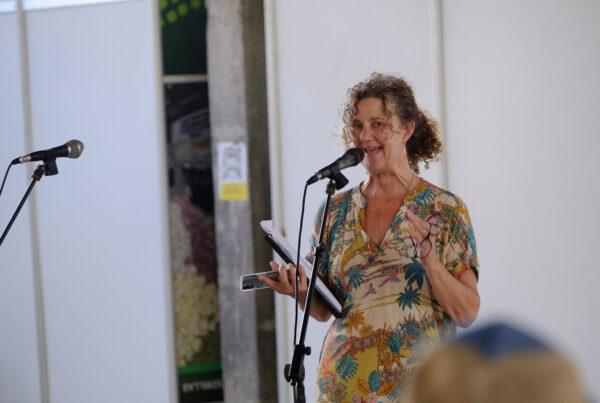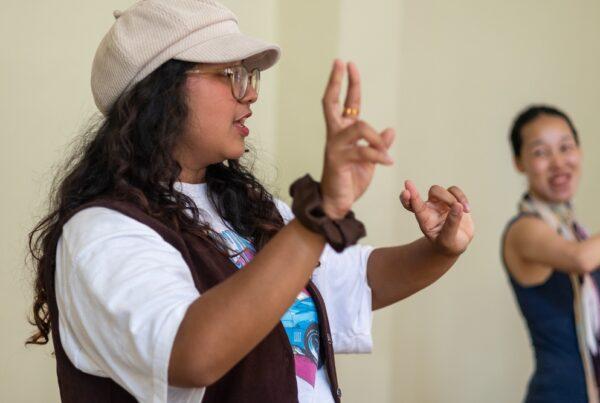Richard Schechner, a professor and theatre maker, concluded in one of his studies: “Performance is only a continuation of the reality in which the spectator lives. The spectator comes to the theatre with all the thoughts they had before sitting in the chair.” According to Schechner, it’s a mistake if the performance is seen as the end of reality.
My reality of coming to the performance ‘Under The Droplet’ is that I was running late because I had mistaken the venue of the performance. I was running the fastest I could, stormed into the Children’s Cultural Centre Novi Sad one minute late, took the last cushion and sat down on the floor. So, my reality was that my heart was beating as if it wanted to leap out of my chest, and I was out of breath and focus. But, here is where Schechner may be wrong: when the performance started, and the poetic narration began, I was immediately calmed down and forgot all about my running through the parking lots and shortcuts between the buildings.

‘Under The Droplet’ by Stanica – service for contemporary dance, Belgrade, is an immersive show, participatory performance that combines elements of contemporary dance, workshops and installation. The theme of the production is a girl’s view of her inner world and of the one that surrounds her. It allows the participants (the children) to think about the interconnection between the world and ourselves, to ask ourselves what kind of a relationship we are in, how we influence each other, whether we are part of one big whole, whether we depend on each other or exist separately, each for themselves. Even though the minimalistic electronic music follows the whole play, the performers (Jovana Rakić, Milica Pisić and Marko Milić) treat the language heard from the narration as music or ambient sound.
In several moments, participants were given the complete freedom to do what they wanted in the space, to pour colour on the paper sculpture, to draw droplets on the canvas. Most of them hesitated to do such a thing. They asked for permission and asked if they would ruin the drawing if they painted on it. They asked their teachers if they were allowed to act so freely. During the Q&A performers talked about the problem of children being so conscious about their actions in the safe space of a performance. “That is exactly why we need this performance,” said performers Jovana Rakić and Milica Pisić during the Q&A. “Children are afraid of constant rules, and authority, and it is important to show them that art is a safe space. That is also why we perform it in smaller towns, outside of the city centres such as Belgrade and Novi Sad where children are more exposed to theatre,” added Rakić.

Participants, the children, said after the play that this was the first time they could talk while watching the performance, and they needed some time to get used to it and get used to the circumstances of being asked to do something with the dances/actors. The fact that all the children helped clean the stage after it ended, shows that they felt as if they were an equal part of it. It shows that ‘Under The Droplet’ is successful and much needed.

Divna Stojanov is a dramaturg and playwright. She also writes theatre reviews.





